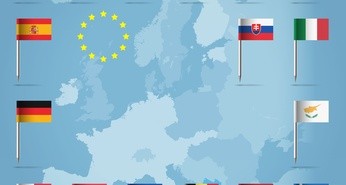Along with the tide of immigration from Africa and the Middle East into the wealthier, more “optimistic” countries of Europe, where these penniless, war-embattled immigrants have been headed, there has been a parallel rise in political instability. The wealthiest countries of Europe – mainly Germany and France – have sought to bear the burden of the desperate wave of humanity that has washed up on their shores, but there has been a price to pay. While it is likely that these countries have the financial resources to absorb a million or more refugees, as Germany has done, this political humanitarianism is not always reflected by the will and perception of German or French citizens in the street. Along with concerns in other European countries such as Spain, Italy, and the soon-to-be Brexited United Kingdom, the popular concern is that there may be just too many immigrants flooding into these countries.
This anxiety is clearly reflected in the continuing rise in popularity of political parties such as Marine le Pen’s Front National, the United Kingdom Independence Party (UKIP), and the German Alternative für Deutschland (AfD). These organizations, that positively thrive on economic lethargy and xenophobia, have gained increasing numbers of votes in democratic elections, which has struck a real note of concern among Europe’s political cognoscenti.
Of course, as is to be expected during any periods of political instability, one of the first victims in such a political climate is a country’s currency. Brexit hit the British pound, hard, and now European lack of political direction and leadership continues to weaken the euro.
Since the recession of 2008 when the USD reached almost 1.60 to the euro, the European currency has weakened dramatically, even toying with parity to the greenback. Recent political worries have seen the European currency weaken again, and after testing the lows of 1.05 USD to the euro in December of 2016, it has now strengthened slightly pushing back to test the 1.20 level during the early months of 2017.
Technical analysis charts suggest that this euro strength is likely to be short lived, and analysts suggest that it would have to show consistent strength, pushing through a resistance level of 1.25 USD to the euro to suggest any kind of new positive trend in the euro’s favor.
Current political trends, be they technological, or humanitarian, are likely to lead to further political instability on the continent of Europe. The potential ripple effects from such uncertainty can most likely be felt in the future direction taken by the European currency. Low European interest rates, reflecting the continued weakness of European economies are also likely to be experienced for the foreseeable future. Add to this the very real concern of other European countries wanting to de-list from Europe, taking the lead from the United Kingdom, then it is inevitable that further economic instability, particularly felt by the European currency, is on the cards.
